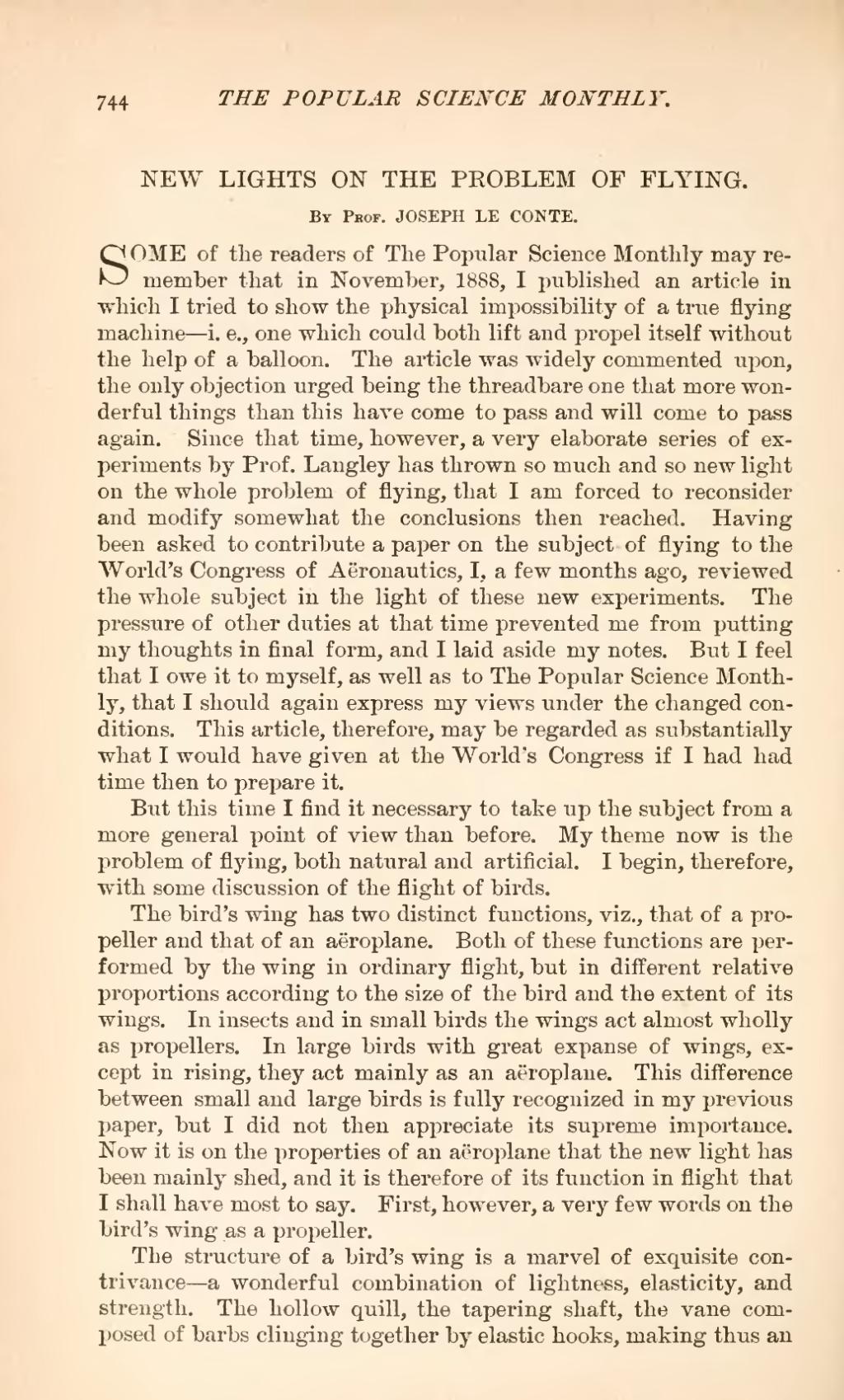| NEW LIGHTS ON THE PROBLEM OF FLYING. |
By Prof. JOSEPH LE CONTE.
SOME of the readers of The Popular Science Monthly may remember that in November, 1888, I published an article in which I tried to show the physical impossibility of a true flying machine—i. e., one which could both lift and propel itself without the help of a balloon. The article was widely commented upon, the only objection urged being the threadbare one that more wonderful things than this have come to pass and will come to pass again. Since that time, however, a very elaborate series of experiments by Prof. Langley has thrown so much and so new light on the whole problem of flying, that I am forced to reconsider and modify somewhat the conclusions then reached. Having been asked to contribute a paper on the subject of flying to the World's Congress of Aëronautics, I, a few months ago, reviewed the whole subject in the light of these new experiments. The pressure of other duties at that time prevented me from putting my thoughts in final form, and I laid aside my notes. But I feel that I owe it to myself, as well as to The Popular Science Monthly, that I should again express my views under the changed conditions. This article, therefore, may be regarded as substantially what I would have given at the World's Congress if I had had time then to prepare it.
But this time I find it necessary to take up the subject from a more general point of view than before. My theme now is the problem of flying, both natural and artificial. I begin, therefore, with some discussion of the flight of birds.
The bird's wing has two distinct functions, viz., that of a propeller and that of an aëroplane. Both of these functions are performed by the wing in ordinary flight, but in different relative proportions according to the size of the bird and the extent of its wings. In insects and in small birds the wings act almost wholly as propellers. In large birds with great expanse of wings, except in rising, they act mainly as an aëroplane. This difference between small and large birds is fully recognized in my previous paper, but I did not then appreciate its supreme importance. Now it is on the properties of an aëroplane that the new light has been mainly shed, and it is therefore of its function in flight that I shall have most to say. First, however, a very few words on the bird's wing as a propeller.
The structure of a bird's wing is a marvel of exquisite contrivance—a wonderful combination of lightness, elasticity, and strength. The hollow quill, the tapering shaft, the vane composed of barbs clinging together by elastic hooks, making thus an

